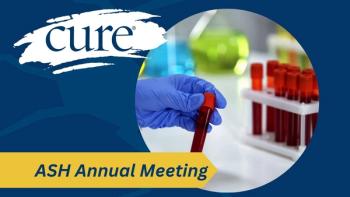
Options for Managing Refractory CLL
Transcript:
Nicole Lamanna, MD: Refractory is a different issue that implies that patients may have less options. Clinical trials are always important. To be fair, they’re important whether you’re relapsed or are being treated in the frontline setting. For rarer diseases, it may be beneficial to be part of a clinical trial that may look at an agent—it may not even be a new agent—it might just be an instance where we have an agent that has outstanding responses. And now we’re looking at a head-to-head with therapies that we consider more standard. So, being part of a clinical trial in chronic lymphocytic leukemia is very important. It gives opportunities for patients who have had a lot of these therapies, whether they were on clinical trials or not, to be part of new drugs that are coming out that look promising. For patients who there are less options available for, that certainly is something to consider.
Let’s talk about CAR (chimeric antigen receptor) T cells and transplant. When we talk about multiply treated patients, CAR T-cell therapy is a therapy that looks at manipulating your T cells, your immune system, to recognize your cancer cells, your CLL cells. And so, the goal would be that you infuse your T cells, or modified T cells, that will recognize your CLL cells and then attack them. In theory, this is great, right? Think of it like a vaccine. You’re getting the flu shot. The goal is that you’ll mount antibodies that will prevent you from getting the flu. So, how do we amount our immune system to attack our cancer cells?
This has been approved in acute leukemia, specifically for ALL. And recently, it is now approved in relapsed diffuse large B-cell lymphoma patients. It’s not yet approved in CLL, but there are clinical trials running in CLL. There have been issues with side effects with CAR T-cell therapy. Even though the technology is cool, this is why it hasn’t made its way into the frontline setting. We have a lot of good therapies, like ibrutinib, which have very few side effects. And so, until we make the side effect profile better with CAR T-cell therapy, given all of the therapies that we have, it’s still in the multiply relapsed setting right now. I think that may change as the side effect profile improves and we get more data in CLL. But certainly, that’s an option for patients with multiply relapsed disease.
When we talk about transplant, people always ask me, “Is that surgery?” Patients go, “What is transplant?” It is not transplant like when you think of an organ donation, a kidney transplant or a liver transplant where there’s surgery involved. This is literally receiving a blood transfusion, very simplistically, of course. You receive someone else’s cells. They engraft in your bone marrow, hopefully, with their cells, and take away your leukemia. Now, you do get chemotherapy with this. The goal is to have you have very little CLL to begin with, if possible, because the less CLL that you have in your bone marrow, the more likely that the donor cells, someone else’s cells, will engraft in your marrow and hopefully get rid of any residual leukemia cells. That’s simplistically what a transplant is.
The problem we have in transplant is that the median age of CLL occurs in an older patient population. The median age is 72. There are side effects with transplants, including what they call graft versus host disease. Remember, there are 2 immune systems. They might fight each other. So, there’s more and different types of side effects with transplant than there is with these other therapies that I’ve been talking about. And so, the age and comorbidities become more relevant. If you are an older patient, age 75 and older, there is a possibility of more potential side effects if going to transplant. It is not applicable, to most of our patients with CLL. That’s the problem. If we can make side effect profiles of transplants better, perhaps we can make it available to older patients, as well. So, that limits the amount of ability of our patients to even go to a transplant, because of the toxicity issue.
We do still use transplants for patients who are younger and may have features to their disease that are more adverse, and for those who are already starting to relapse on certain therapies. We will take our younger folks, potentially, to transplant because of those reasons. But when you talk about this, in the grand scheme of multiple therapies, it probably falls further down because of those issues and our inability to treat the older patient populations without too many side effects. There’s a whole bunch novel therapies that are being looked at, including combinations with ibrutinib or combinations with these B-cell receptor agents, combinations with the BCL-2 inhibitors. So, there are a lot of opportunities for multiply relapsed patients to take advantage of combinations with the novel agents. And that’s certainly better than what we had before, in the era of solely chemoimmunotherapy. So, there are options for the relapsed and refractory patients.
Transcript Edited for Clarity




